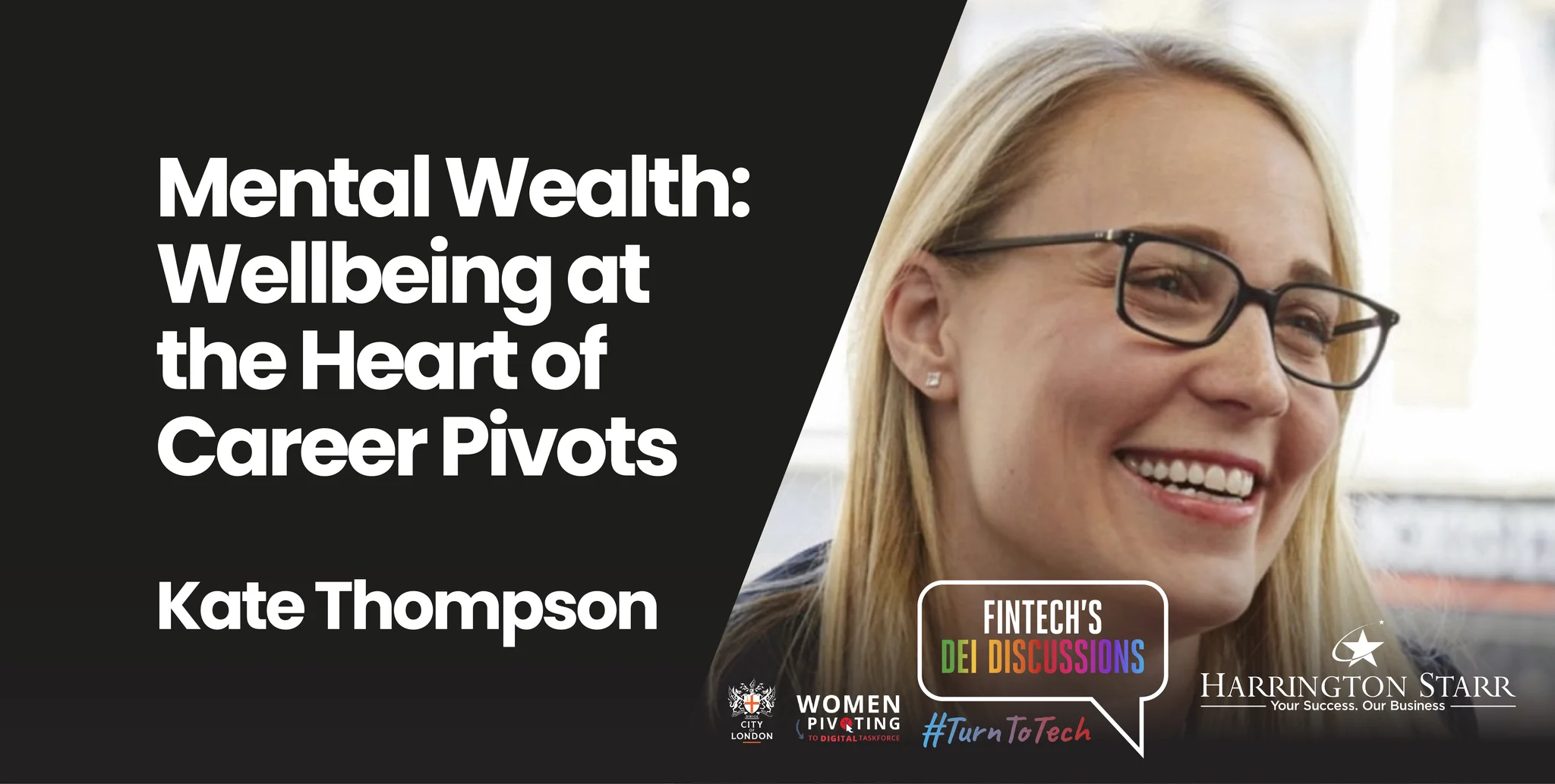When speaking to buy-side candidates on a day-to-day basis, it is clear that while money talks, the biggest differentiator and talking point remains company culture. There are certain buy-side companies whose tech staff will likely never move because their company satisfies both key needs: financial compensation and a positive culture. Employees not only receive competitive pay but also feel valued and cared for.
Introduction: The New Era of Buy-Side Recruitment
The buy-side industry is undergoing significant changes as firms attempt to strike the right balance between offering attractive compensation and fostering a culture that promotes long-term employee satisfaction. This shift comes as firms face challenges in not only attracting but also retaining top-tier talent, especially in tech roles that are critical for maintaining a competitive edge. In this blog, we will explore how compensation, culture, and technology—specifically AI—are influencing the recruitment landscape, and how firms can adapt to stay ahead in major financial hubs like London, New York and Belfast.
The Evolving Landscape of Compensation and Culture in Hedge Funds
Hedge funds have traditionally attracted high-performing, ambitious individuals motivated by financial rewards. The industry is known for competitive salaries, sizable bonuses, and unparalleled benefits. However, in recent years, there’s been a marked shift. Many hedge funds now realise that high compensation alone isn’t enough to attract and retain top talent, especially with younger generations placing more value on work-life balance, purpose and ethical alignment.
Balancing FinTech Compensation and Culture
The challenge for hedge funds is multifaceted. On one hand, they need to offer compensation packages that reflect the demands of the job and their employees' expectations. On the other, they must foster an environment where people feel valued, motivated, and aligned with the firm's mission. This is particularly relevant in high-stress roles where burnout can be prevalent if culture is not prioritised.
Financial Tech Job Mobility and Retention Statistics
Our research at Harrington Starr shows that, on average, 23% of tech staff within our buy-side network are open to new job opportunities, with double that number open to receiving a headhunt call. This means that nearly 50% of tech professionals could potentially be swayed to make a move.
These professionals often face a difficult decision: whether to stay in a demanding role that pays well or risk taking a pay cut for a better work-life balance. This cycle often leads to burnout, with the average buy-side tenure hovering around the two-year mark.
How Do You Change This Dynamic?
As hedge funds face increased scrutiny and the competition for top talent intensifies, firms must rethink the factors driving not just performance but long-term loyalty and job satisfaction. The clients who are moving ahead of their competition in both attracting and retaining talent are those who find the balance between compensation and culture.
The Importance of Work-Life Balance
One key trend we have observed is that work-life balance has become increasingly important in FinTech, particularly among tech professionals who have the skills to transition across industries. Firms that offer flexible working arrangements and invest in the overall well-being of their staff are more likely to retain top talent. This trend is especially evident in financial hubs like London and New York, where high living costs and long commutes can amplify the need for flexibility.
FinTech Hybrid Work Models: A Game Changer?
One key issue is the preference for hybrid working. The 5-day-a-week office model significantly limits the talent pool, cutting off excellent candidates who could commit to only a few days in the office due to factors like long commutes or childcare responsibilities.
Is a 5-Day Office Model Still Viable?
While some firms may argue that in-office presence is critical for team cohesion and productivity, others are finding success with flexible work arrangements. Companies like Bridgewater Associates and Two Sigma demonstrate that culture and competitive pay can be integrated to create a compelling proposition for a wider talent pool.
Examples of Success
Bridgewater Associates: Known for its "radical transparency" and focus on personal growth, Bridgewater fosters an environment where employees feel engaged and supported while still being competitively compensated.
Two Sigma: This company emphasises a tech-driven, collaborative culture that appeals to those interested in both finance and cutting-edge technology, illustrating how a positive culture can complement financial incentives.
Citadel: Another notable example, Citadel has invested heavily in creating a collaborative and innovative work environment while offering highly attractive pay packages to its employees.
The Growing Role of AI in Hedge Funds
Current High-Growth Area: AI and Data Teams
AI and machine learning (ML) models are only as effective as the data sets they are built and trained upon. The demand for highly skilled professionals to oversee these operations is crucial. Buy-side firms are increasingly leveraging AI across various functions, including portfolio optimisation, risk mitigation, alpha generation, and fraud detection.
Benefits of AI in Hedge Funds
Improved Decision-Making: AI identifies complex patterns in data that may be missed by human analysts, leading to more informed investment decisions.
Enhanced Speed and Efficiency: AI allows for real-time or near-real-time data analysis, crucial in high-frequency trading.
Cost-Effectiveness: Automating data analysis and compliance tasks reduces operational costs, freeing up resources to focus on strategic initiatives.
Adaptability: AI models continuously learn and adapt, making them valuable in volatile markets. This adaptability can be especially useful during economic downturns or sudden market changes.
Examples of Firms Leading in AI Adoption
Two Sigma: Renowned for its extensive use of AI and ML in trading strategies, combining alternative data with predictive analytics to achieve remarkable results.
Bridgewater Associates: Uses an AI-powered investment research platform to augment decision-making, focusing on data from diverse economic, social, and political domains.
Man Group’s AHL Division: Utilises AI to analyse non-traditional data for adaptive trading models, allowing them to respond swiftly to changing market conditions.
Challenges in AI Integration
Data Quality and Transparency
AI relies on high-quality data to function effectively. Hedge funds must ensure their data sources are reliable and comprehensive. Additionally, the “black box” nature of some AI models can be a challenge when explaining decisions to clients or regulators.
Talent Acquisition and Costs
The infrastructure and talent needed for AI adoption are significant investments. Data scientists, AI engineers, and quantitative analysts are in high demand and can be costly to hire. Firms must compete not only with other hedge funds but with tech giants who also seek this talent.
Regulatory Concerns
The increasing use of AI in trading comes with ethical and regulatory questions. As AI becomes more common, hedge funds must be prepared for stricter regulations. This includes ensuring that AI models are transparent and explainable, aligning with guidelines set by financial authorities.
Key Benefits of Partnering with Harrington Starr
Extensive Talent Pool: Harrington Starr is a multi-award-winning FinTech agency who have been actively recruiting on behalf of Buy Side firms for over 15 years. In that time, we have cultivated an extensive talent pool which is constantly updated and refreshed by our specialist consultants across the following major disciplines: Data, Quants, Cloud and Infrastructure, Support (Desktop/Applications), Development, Change & Transformation, Networking & Security.
Specialist Consultants: Our consultants keep in touch with the best talent in the market, so you don’t have to. Adverts will get you so far but typically the top candidates in the market are hard to reach and need bespoke outreach to be engaged and then retained. We are committed to building exceptional relationships with our talent pools so that when we come to them with the prospect of joining your firm, they trust in what we are saying and willingly dedicate their time to speaking with you.
Market Insights: We provide comprehensive market analysis, allowing you to stay ahead of recruitment trends and industry developments.
Personalised Approach: We offer tailored outreach strategies and work closely with clients to understand their unique needs, ensuring the best possible candidate matches.
Strong Industry Engagement: Our consultants engage talent and clients through our FinTech events, FinTech podcasts and regular face-to-face interactions, reinforcing trust and interest in your opportunities.
Ongoing Support: We don’t just place candidates and move on. Harrington Starr offers continued support, providing advice and market insights to help our clients adapt to changes and stay competitive.
Conclusion
The buy-side industry is at a pivotal moment. As firms strive to balance competitive compensation with a culture that supports flexibility and innovation, the right recruitment strategy becomes essential. The integration of AI continues to shape the sector, offering substantial advantages but requiring careful investment in talent and infrastructure.
Harrington Starr is uniquely positioned to support your firm’s FinTech recruitment needs, helping you navigate the complexities of talent acquisition and retention. By partnering with us, you gain an experienced recruitment team dedicated to sourcing and securing top-tier candidates who will contribute to your firm’s long-term success. Embracing this balance of compensation, culture, and cutting-edge technology will ensure that your firm remains an attractive and forward-thinking employer in financial hubs like London, New York and Belfast.
Get in Touch for More Info:
sean.kennedy@harringtonstarr.com
+44 (0)203 318 0146






